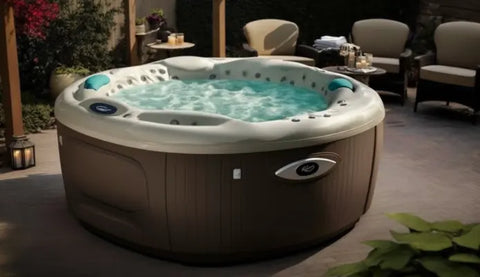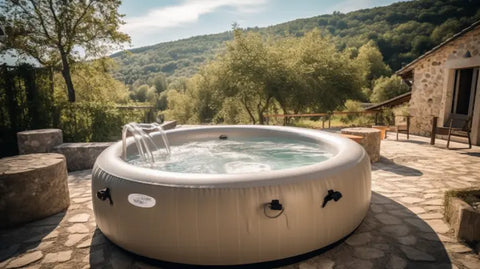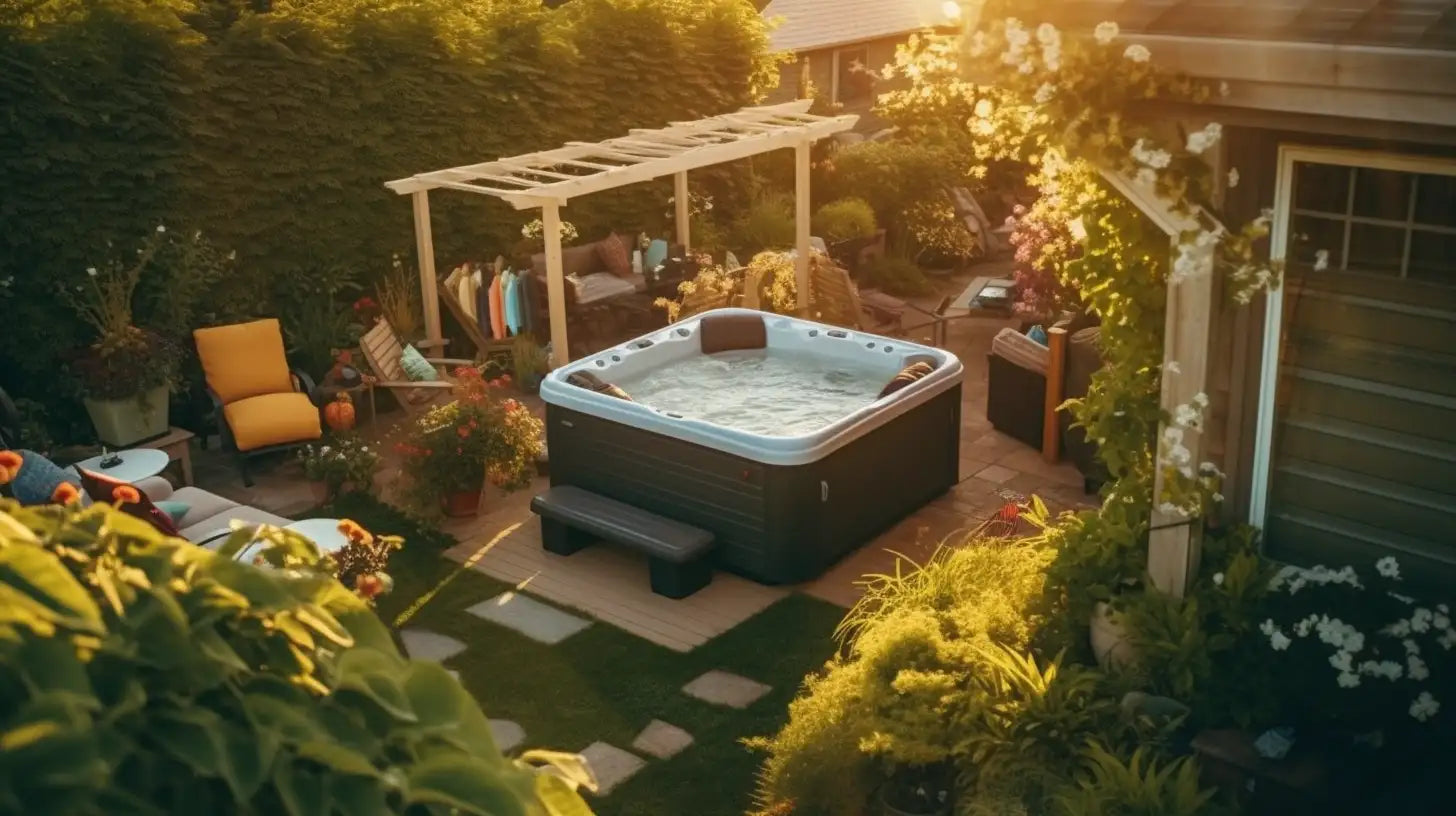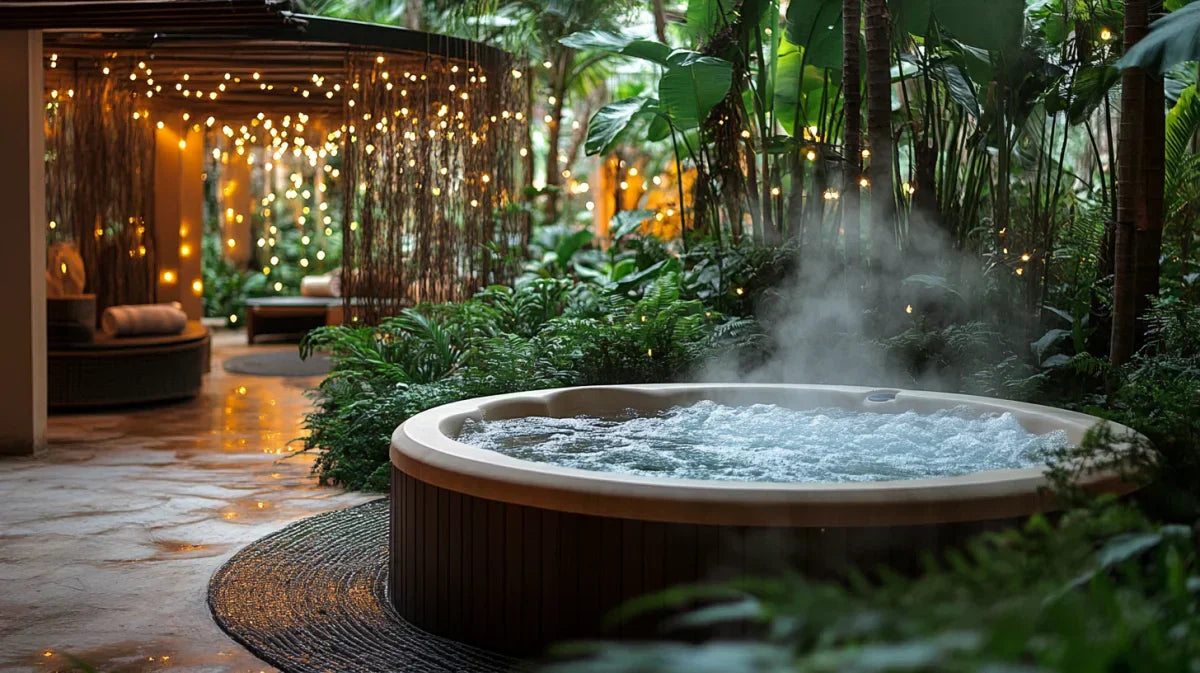Understanding the Cost of Heating a Hot Tub
The expense associated with heating a hot tub varies significantly, influenced by factors such as the tub's size, the temperature setting, frequency of use, local climate, and the regional cost of electricity or gas. In the UK, you might expect to spend approximately £15 to £30 monthly to heat a hot tub, given an average electricity rate of around 14p per kWh. However, this is merely a rough estimate and actual costs may be higher or lower depending on circumstances.
To shed more light, let's consider each influencing factor:
- Size of the hot tub: Naturally, larger hot tubs require more energy to heat up and maintain their temperature, hence, they cost more to run.
- Temperature settings: As the thermostat rises, so does the cost to sustain that level of heat.
- Frequency of use: Frequent use of your hot tub, coupled with leaving it uncovered when idle, results in quicker heat loss and increased energy use to reheat it.
- Local climate: Colder climates will prompt faster heat loss from your hot tub, especially if it is situated outdoors.
- Cost of electricity or gas: Energy costs differ by location. Check your local rates to obtain a more precise estimate.
It's important to remember that these are simply estimates and the actual cost may vary. Furthermore, some hot tubs are designed with greater energy-efficiency in mind; this is a key consideration when purchasing a hot tub.
Inflatable Hot Tubs versus Hard Body Hot Tubs: Which is More Cost-Efficient?

Despite their lower initial cost, inflatable hot tubs can incur higher operational costs compared to hard body hot tubs. This is primarily because inflatable hot tubs are typically less insulated and, as a result, they lose heat more quickly and require more energy to maintain the desired temperature, especially in cooler weather. This can lead to a rise in electricity costs.

Moreover, inflatable hot tubs may not be as durable as hard body hot tubs. Being more prone to punctures and other forms of damage could entail extra repair or replacement costs over time. However, these costs can vary depending on the frequency of use, local climate, and the specific model of the hot tub. It's also worth noting that some inflatable hot tubs are more energy-efficient than others, which should be a consideration when choosing a hot tub.
Strategies to Lower the Operating Costs of a Hot Tub
Lowering the operating costs of a hot tub hinges on efficient usage, high-quality insulation and regular maintenance. Here are some strategies that can help reduce these costs:
- Invest in a quality cover: A well-insulated cover can significantly reduce heat loss, particularly when the hot tub is idle. Ensure the cover fits correctly and is in good condition. Replacement should be considered if it shows signs of wear or damage.
- Regulate the temperature: Lowering the temperature by a few degrees can result in significant energy savings. Consider reducing the temperature when the hot tub is not in use and raising it before you plan to use it.
- Utilise energy-efficient settings: Many hot tubs come with energy-saving modes or settings. These may include a lower temperature setting when the hot tub is idle, or a timer that heats the hot tub only during off-peak energy hours.
- Commit to regular maintenance: A clean and well-maintained hot tub runs more efficiently. This involves regularly cleaning the filter, inspecting for leaks, and ensuring the water chemistry is balanced.
- Choose a high-quality hot tub: While they may cost more upfront, higher-quality hot tubs are often more energy-efficient, which can result in lower operational costs in the long term.
- Consider an insulated lid: An insulated hot tub lid provides a significant amount of thermal insulation, reduces evaporation, and helps maintain the water temperature.
- Create a windbreak: If your hot tub is outdoors, a windbreak can help reduce heat loss.
- Regularly adjust water chemistry: Ensuring the water chemistry is correct not only creates a safer and more comfortable environment for users, but also aids the equipment's efficiency and longevity.
Remember, the operating cost of a hot tub can vary depending on the specific model, the local climate, and its usage frequency. By adopting these strategies, your hot tub's energy efficiency can be optimised, potentially reducing the associated running costs.
Frequently Asked Questions
-
How much does it typically cost to heat a hot tub in the UK?
On average, you can expect to spend around £15 to £30 per month to heat a hot tub in the UK. However, this can vary based on several factors, including the size of the hot tub, temperature settings, frequency of use, local climate, and energy costs in your area.
-
Does the size of the hot tub affect the heating cost?
Yes, the size of the hot tub can significantly affect the heating cost. Larger hot tubs require more energy to heat up and maintain the temperature, leading to higher costs.
-
Does frequent usage increase the heating cost of a hot tub?
Yes, frequent use of a hot tub can increase the heating cost, especially if the tub is left uncovered when not in use. This leads to quicker heat loss, requiring more energy to reheat.
-
Does local climate affect the cost of heating a hot tub?
Yes, the local climate can significantly impact the cost of heating a hot tub. In colder climates, hot tubs lose heat more quickly, especially if located outdoors, thereby requiring more energy to maintain the desired temperature.
-
Are inflatable hot tubs cheaper to run than hard body hot tubs?
Not necessarily. Although inflatable hot tubs are cheaper to purchase, they often incur higher operating costs. They are generally less insulated, causing them to lose heat more quickly and require more energy to maintain the desired temperature. Moreover, they are more susceptible to damage, which could lead to additional repair or replacement costs over time.
-
How can I reduce the cost of running a hot tub?
There are several strategies to reduce running costs, including using a good quality cover, adjusting the temperature settings, using energy-efficient modes, maintaining the hot tub regularly, investing in a high-quality tub, using a thermal blanket, creating a windbreak, and regularly adjusting water chemistry.
-
How does a cover reduce the cost of running a hot tub?
A well-insulated cover significantly reduces heat loss, particularly when the hot tub is not in use. It keeps the heat in, reducing the energy required to maintain the temperature.
-
Can energy-efficient settings on a hot tub help save costs?
Yes, many hot tubs come with energy-saving modes or settings. These can lower the temperature when the hot tub is not in use, or heat the tub only during off-peak energy hours, resulting in significant energy savings.
-
How does regular maintenance help reduce the operating costs of a hot tub?
Regular maintenance ensures that your hot tub runs efficiently. This includes activities like cleaning the filter, inspecting for leaks, and balancing the water chemistry. A well-maintained hot tub uses less energy and incurs fewer repair costs.
-
Does the quality of the hot tub affect its operating costs?
Yes, while high-quality hot tubs may cost more upfront, they often result in lower operating costs in the long term. They are usually more energy-efficient and durable, reducing the need for frequent repairs or replacements.



